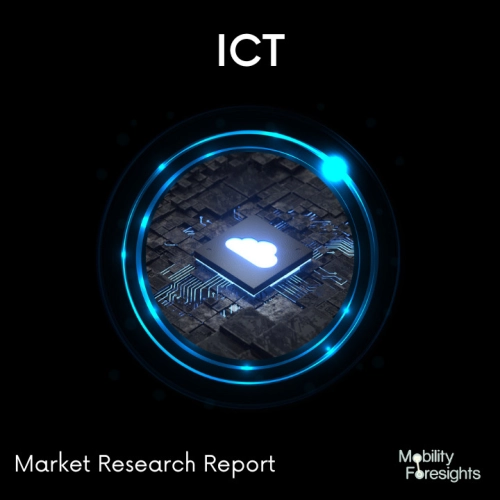
- Get in Touch with Us

Last Updated: Apr 25, 2025 | Study Period: 2024-2030
Solid state drives (SSDs) are a new type of data storage technology, designed to replace traditional hard disk drives (HDDs) and revolutionize the way we store and access data. An SSD is a type of non-volatile memory that uses integrated circuit assemblies as memory to store data persistently.
Unlike HDDs, which use spinning disks to read and write data, SSDs use flash-based memory, which is much faster, more reliable, and more durable.
The advantages of SSDs over HDDs are numerous. For starters, SSDs are much faster than HDDs, providing up to 10 times the performance of an HDD in terms of data access and retrieval. This is because SSDs don't rely on moving parts, which can cause HDDs to become slow and unreliable.
Additionally, SSDs are more reliable, as they are less likely to suffer from mechanical failure due to their lack of spinning disks. This makes them more durable, as they are better able to withstand shocks and vibrations.
In addition to being faster and more reliable, SSDs are also more energy efficient than their HDD counterparts. This is due to their lack of moving parts, which reduces the amount of power required to store and access data. This makes them more suitable for use in laptops and other devices that require extended battery life.
Finally, SSDs are also more cost-effective than HDDs. This is because they require fewer pieces and components, making them cheaper to manufacture. In addition, their lack of moving parts helps to reduce maintenance costs, as there is no need to replace motors or other components.
It's clear that SSDs are the way of the future when it comes to data storage. Their speed, reliability, durability, and energy efficiency make them a more attractive option than their HDD counterparts. As such, it's likely that SSDs will become the standard for data storage in the near future.

The Global MLC SSD market accounted for $XX Billion in 2023 and is anticipated to reach $XX Billion by 2030, registering a CAGR of XX% from 2024 to 2030.
The new 240S Series Industrial MLC SATA SSD, which boasts more than double the sequential read and write speeds of the 220S Series SSD currently in use, has been introduced by Cactus Technologies.
Based on the most recent MLC NAND flash, the 240S Series SATA SSD is available in capacities ranging from 16GB to 1TB and is made in the industry-standard 2.5" SATA SSD form factor.
This quick and dependable MLC SATA SSD features sophisticated Wear Levelling, ECC, and Defect Management along with Locked BOM Control, High Performance, and Rugged Construction. A normal Cactus policy is to notify the OEM of any design changes made to the controller, memory, or firmware.
Hitachi has introduced new multilevel-cell (MLC) solid state drives for cloud and enterprise data centres that are based on Intel's NAND Flash memory technology. The product is positioned as a less expensive Flash storage option for these types of environments, costing less than single-level cell SSDs.
400GB of storage with 7.3 petabytes of lifetime random writes is offered by Hitachi's new Ultrastar SSD400M MLC SSD system. Hitachi claims that at 10 full drive writes per day for five years, the solution meets the needs of the majority of enterprise applications. The company wanted to offer high-i/o enterprise applications users a dependable, affordable storage solution.
Hitachi now provides a comprehensive range of HDD and SLC- and MLC-based SSD storage solutions that support the whole enterprise ecosystem, in addition to this new MLC SSD offering. Hitachi claims that the kind of applications using the drives will determine whether to employ MLC or SLC SSDs. For instance, MLC SSDs offer lower costs and larger storage densities, making them suitable for applications that require a lot of reading.
Conversely, SLC SSDs offer increased durability and dependability for applications that require a lot of writing. The company brought attention to a new trend among enterprise SSD adopters: combining MLC and SLC drives in tiered systems. For instance, SLC-based solutions can be used for online transaction processing, whereas MLC SSDs are better suited for back-office database analytics and video streaming.
| Sl no | Topic |
| 1 | Market Segmentation |
| 2 | Scope of the report |
| 3 | Abbreviations |
| 4 | Research Methodology |
| 5 | Executive Summary |
| 6 | Introdauction |
| 7 | Insights from Industry stakeholders |
| 8 | Cost breakdown of Product by sub-components and average profit margin |
| 9 | Disruptive innovation in theIndustry |
| 10 | Technology trends in the Industry |
| 11 | Consumer trends in the industry |
| 12 | Recent Production Milestones |
| 13 | Component Manufacturing in US, EU and China |
| 14 | COVID-19 impact on overall market |
| 15 | COVID-19 impact on Production of components |
| 16 | COVID-19 impact on Point of sale |
| 17 | Market Segmentation, Dynamics and Forecast by Geography, 2024-2030 |
| 18 | Market Segmentation, Dynamics and Forecast by Product Type, 2024-2030 |
| 19 | Market Segmentation, Dynamics and Forecast by Application, 2024-2030 |
| 20 | Market Segmentation, Dynamics and Forecast by End use, 2024-2030 |
| 21 | Product installation rate by OEM, 2023 |
| 22 | Incline/Decline in Average B-2-B selling price in past 5 years |
| 23 | Competition from substitute products |
| 24 | Gross margin and average profitability of suppliers |
| 25 | New product development in past 12 months |
| 26 | M&A in past 12 months |
| 27 | Growth strategy of leading players |
| 28 | Market share of vendors, 2023 |
| 29 | Company Profiles |
| 30 | Unmet needs and opportunity for new suppliers |
| 31 | Conclusion |
| 32 | Appendix |